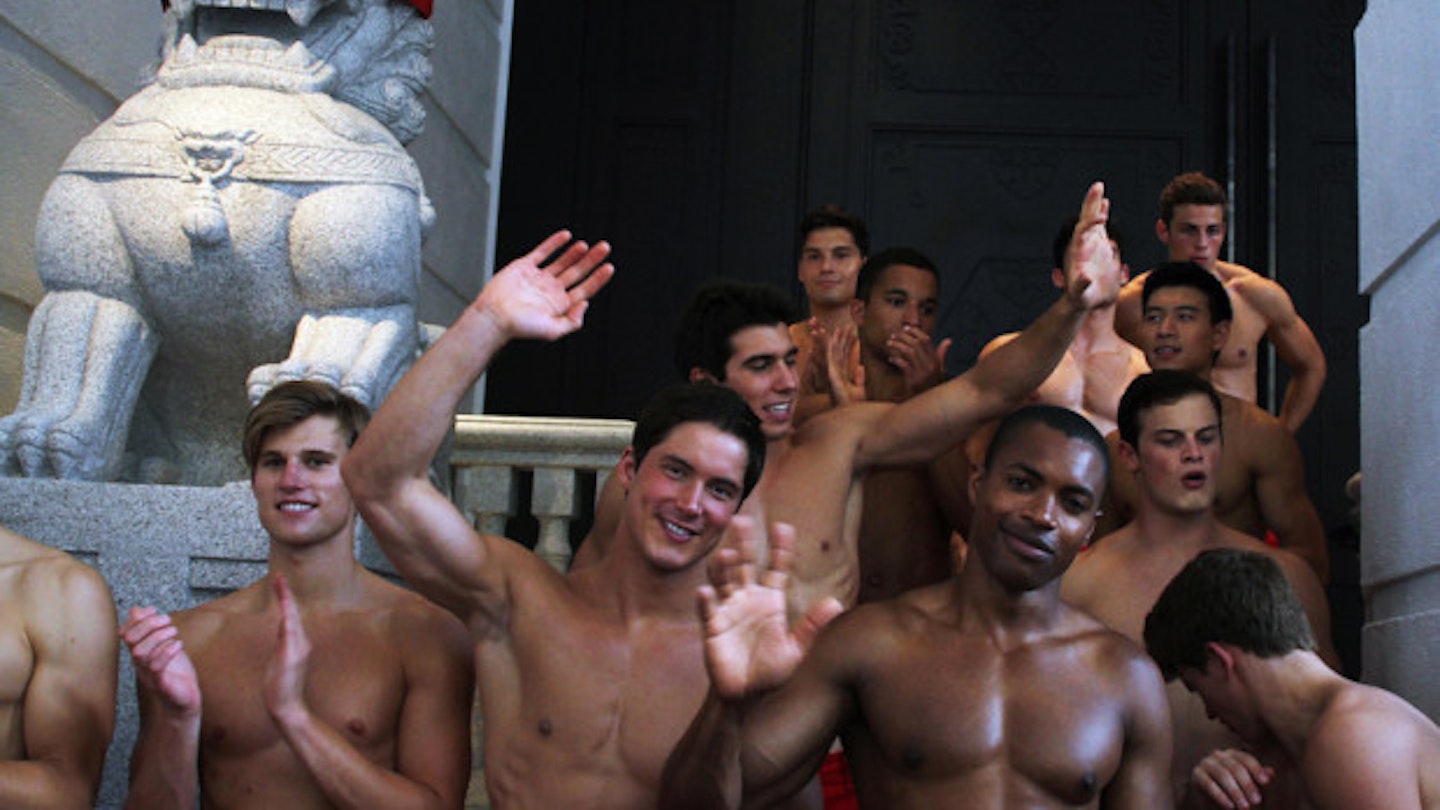Controversy has swirled around the super-glossy American colleagiate brand Abercrombie & Fitch for as many years as their 'nightclub' shop interior has caused us headaches. It all started in 2005, with a whopping $50 million sex and racism lawsuit filed by Latino, African-American and Asian-American ex-employees. 'Are we exclusionary?' said CEO Mike Jeffries, in 2006. 'Absolutely.' Then, in 2009, law student Riam Dean sued the company, claiming she'd been banished to the stockroom because her amputated arm meant that she didn't conform to Abercrombie's model-ready staff policy. Riam lost the case, but the damage had been done: People began questioning the motivations (and means) behind the Abercrombie 'look'. 'The Abercrombie and Fitch look?' retorted The Guardian's Hadley Freeman in 2009. 'A porno version of Brokeback Mountain. And judging by their ads, the look is no clothes at all – brave, for a fashion label.'
Now another ex-employee has come forward with a negative – but also teeny bit funny – testimony of his time there in the early noughties. Writer Oliver Bateman complains that his A&F superiors made him wear beaded anklets, loads of layers (the polo shirt over long-sleeved tee is eternally *a la mode *at Abercrombie) and pop his collars. We know, right? It sounds like preppy torture.
Joshing apart,though, Oliver had more damning things to say about the widely- heard supposition that Abercrombie 'cast' hot male leads to work in their store. Think of it as the un-PC O.C. of the high street. Oliver says he was 'scouted' while at college by a man who 'was dressed like an aging actor who had been miscast as a teenage in a hot college comedy. Three too-tight T-shirts, one layered atop the next, with each shirttail exposed. Several shell necklaces. Beaded anklets on each ankle. "Distressed" cargo shorts. Flip flops.' Does anyone else have a seriously vivid memory of this dude right now?
According to Oliver, 2002 – the year he started working at Abercrombie – was a seminal year. Bruce Weber's 'lush' quarterly ad campaigns were whipping up consumer culture with their black and white wholesomeness. Aged 20, Oliver was a self-confessed 'arrogant asshole' and says that once he said 'no ma'am, we don't carry a Size 16 in those pants' enough times', it simply became a catty refrain that would punctuate his time as an A&F shop assistant.
But that didn't stop him being horrified at what can only be described as a questionable store policy. Oliver, a 'solid B-minus' in looks, according to his regional manager, was often relegated to the back room (although never fired, as he was a 'smartypants'.) 'The top brass consisted primarily of extremely fit, extremely tanned white men who despised women,' Oliver explains. 'Our regional manager [would] drop one nugget of bitchy wisdom after another: "That form [mannequin] is a fucking disasterpiece. Those lights look like shit. Are you retarded? Are you blind? And why the fuck aren't you wearing more layers and [jewellery]?"'
(Now if this wasn't so alarming, we'd say we really like the term 'disasterpiece' and we can only imagine what an excellent parody this would make, if we could sign up Lena Dunham as our co-creator. But sadly, this isn't TV. It's IRL).
The funny thing is – or not funny, as it happens – is that for a long time, these horrific testimonies did not dent Abercrombie & Fitch's sales one iota. That only happened in November 2013, when it was reported that sales started falling. Not necessarily for their aesthetic prejudice, but because consumers had gotten over brightly coloured sweatpants and wetsuit-tight popped-collar polo shirts, worn with a slick of cherry flavour gloss. It'll be interesting to see if Oliver's admission dents them yet further.
Follow Pandora on Twitter @pinsykes
Picture: Getty
This article originally appeared on The Debrief.
